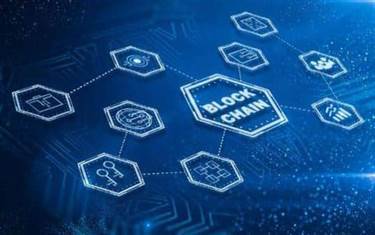It builds on the advantages of steady supply by automating the following stage within the pipeline. The strategy helps reduce the price, time,[citation needed] and threat of delivering changes by allowing for extra incremental updates to applications in manufacturing. A straightforward and repeatable deployment course of is essential for steady delivery. Continuous delivery emphasizes automation that minimizes the guide effort required to deploy code changes. In a continuous supply pipeline, developers create their code, it passes automated checks, and is then automatically built-in with a repository like a container registry or a binary repository. The operations groups can then deploy the code to the stay production environment at the push of a button.
While in steady supply, the deployment pipeline follows an on-demand model; it’s pushed routinely each time. The so-called CICD pipeline (continuous integration/continuous deployment) is a practice centered on bettering software delivery throughout the software program development life cycle by way of deployment automation. CI and CD stand for steady integration and continuous delivery/continuous deployment. In very simple phrases, CI is a contemporary software improvement practice in which incremental code changes are made incessantly and reliably. Automated build-and-test steps triggered by CI be certain that code changes being merged into the repository are reliable. In the software world, the CI/CD pipeline refers back to the automation that allows incremental code adjustments from developers’ desktops to be delivered shortly and reliably to production.
Continuous integration is a growth philosophy backed by course of mechanics and automation. When training continuous integration, developers commit their code into the version management repository regularly; most groups have a regular of committing code a minimum of day by day. The rationale is that it’s easier to determine defects and other software high quality points on smaller code differentials than on bigger ones developed over an in depth interval. In addition, when builders work on shorter commit cycles, it is much less likely that multiple developers will edit the same code and require a merge when committing. Each of those practices improves course of automation and increases the robustness of cloud computing environments.
More Insights On Steady Delivery
Our objective is to make deployments—whether of a large-scale distributed system, a posh production surroundings, an embedded system, or an app—predictable, routine affairs that could be carried out on demand. A CI/CD pipeline is a collection of steps performed in order to ship a model new model of software program. Continuous supply makes up part of CI/CD, a method to incessantly ship software by automating some of the stages of app development.
One of the most important challenges confronted by improvement teams using a CI/CD pipeline is sufficiently addressing safety. It is important that groups construct in security without slowing down their integration and supply cycles. Moving safety testing to earlier within the life cycle is doubtless considered one of the most essential steps to reaching this aim. This is very true for DevSecOps organizations that depend on automated security continuous delivery maturity model testing to maintain up with the pace of supply. Continuous supply (CDE) is a software program engineering strategy which allows teams to produce software briefly cycles and ensures that the software program could be manually and reliably launched at any time. It goals to automate the software supply process by building, testing, and releasing new features and modifications with larger velocity, accuracy, and frequency.

Subsequent opportunities for enchancment focus on reducing the batch size and applying the DevOps practices recognized in each of the precise articles describing the continual delivery pipeline. The Team Flow and ART Flow articles present further steering on tips on how to make value flow without interruption (Principle #6). CDE, an integral side of DevOps, aims to attenuate the friction points which would possibly be inherent in software program deployment or release processes. By automating each of the steps for construct deployments, it ensures safe code launch. When combined with CI and CD, it improves collaboration between numerous groups and enables the supply of high-quality software program for continued success.
Together, these practices provide a strong basis to help continuous deployment. With the software program growth landscape evolving so rapidly, conventional software program product development and supply methods are rapidly turning into obsolete. If you want to enhance your time-to-market, improve your software program high quality, and set yourself aside from competition, DevOps can enable you to build high-quality software program. Continuous supply (CD) is an software growth follow that includes routinely preparing code changes for release to a production setting. Combined with continuous integration (CI), steady supply is a key aspect of recent software program growth.
How Does Pipeline Automation Help Continuous Delivery?
By automating code integration and delivery, CI/CD lets software program improvement groups concentrate on meeting enterprise necessities whereas guaranteeing that software program is high in high quality and safe. Automated construct and deployment and integrated exams be positive that manual processes concerned https://www.globalcloudteam.com/ earlier in pre-production deployments at the second are completely removed. By eliminating last-minute surprises, manufacturing releases have turn into a routine job rather than a developer panic second. This method has helped teams obtain quicker time-to-market with an increased variety of releases than earlier than.
- Teams implementing continuous integration often start with the version control configuration and follow definitions.
- Delivering new software program is the only most necessary perform of companies attempting to compete right now.
- Continuous deployment should be the objective of most firms that are not constrained by regulatory or other necessities.
- Containers make it straightforward to scale up or tear down environments with variable workloads.
- Upon any discrepancy, it updates the infrastructure to match the setting repository.
Continuous deployment, however, covers some further steps by way of the release process of the brand new software program. It usually contains the process of mechanically releasing a developer’s adjustments from the repository to manufacturing, where it’s usable by clients. It addresses the issue of overloading operations groups with guide processes that slow down the app supply process.
What Is Steady Delivery?
There’s an obvious cost to implementing each practice, nevertheless it’s largely outweighed by their benefits. With this follow, every change that passes all levels of your manufacturing pipeline is launched to your clients. There’s no human intervention, and solely a failed test will stop a model new change to be deployed to manufacturing.

To adapt, you have to shift to an strategy focused on agile, DevOps and continuous delivery. As part of a steady delivery pipeline, these targeted processes enable extra dependable, high-quality software program releases and updates. Continuous delivery is a popular approach for software supply, particularly for groups that follow DevOps. It is often paired with steady integration to kind a sequence of processes for software program growth, deployment and suggestions loops referred to as a CI/CD pipeline.
What Are The Differences Between Steady Integration, Continuous Supply, And Steady Deployment (ci/cd)?
If you are simply getting began on a new project with no customers but, it may be simple for you to deploy each decide to manufacturing. You might even start by automating your deployments and releasing your alpha version to production with no customers. Then you can ramp up your testing tradition and just remember to improve code coverage as you construct your application. By the time you are able to onboard users, you should have a great continuous deployment process the place all new changes are tested earlier than being automatically launched to manufacturing.

A major consequence of implementing DevOps is a CI/CD pipeline supported by improvement and operations teams working collectively utilizing an agile methodology. Continuous supply and continuous deployment are comparable concepts which are commonly confused with each other. Both are utilized in live performance with continuous integration, which is why the term CI/CD can also be commonly confused. These revolutionary approaches progressively developed and became pervasive, moving the industry’s emphasis from small corporations to huge software tasks. Early agile approaches sped up the process of code development, however regularly encountered silos and bottlenecks. Continuous integration could perform automated functional checks against an utility by deploying it to an embedded application server using a growth software corresponding to ant or maven.
Continuous integration not only packages all of the software and database elements, however the automation may also execute unit checks and different types of tests. Testing offers important feedback to developers that their code modifications didn’t break anything. In order to successfully implement and run a CI/CD pipeline, organizations need instruments to prevent points of friction that slow down integration and delivery. Teams require an integrated toolchain of applied sciences to facilitate collaborative and unimpeded development efforts.
How Ci Cd Tools Have Revolutionised Automation Testing?
Continuous delivery tools also provide dashboard and reporting capabilities, that are enhanced when devops teams implement observable CI/CD pipelines. The dashboard and reporting features combine with version control and agile tools to help builders decide what code changes and consumer tales made up the construct. Many groups use feature flags, a configuration mechanism to show options and code on or off at runtime.
Tests that require a full supply setting, corresponding to performance and safety testing, are sometimes built-in into steady supply and done after a construct is delivered to its target environments. Let’s look at what steady delivery is, how it improves software program product improvement velocity, frequency, and reliability, and the way it’s different from continuous integration and continuous deployment. Agile is a way of manufacturing software program in brief iterations on a steady supply schedule. Today’s agile continuous supply course of means you’ll be able to launch code to the client as each outlined characteristic turns into available. Agile growth and steady delivery are your keys to getting options to the client as soon as production-ready. The main identifying criterion of a real CD pipeline is that software program can be deployed all through its complete lifecycle.






